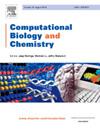Alzheimer’s disease classification using hybrid loss Psi-Net segmentation and a new hybrid network model
IF 2.6
4区 生物学
Q2 BIOLOGY
引用次数: 0
Abstract
Alzheimer's disease (AD) is a type of brain disorder that is becoming more prevalent worldwide. It is a progressive and irreversible condition that gradually impairs memory and cognitive abilities, eventually making it difficult to perform even basic tasks. While the symptoms may not be noticeable until the disease has progressed significantly, early diagnosis can help slow its progression. Unfortunately, there is currently no cure for AD, and although medications and therapies can help manage its symptoms, they cannot reverse the disease. This article proposes a SpinalNet-Rider Neural Network (Spinal-RideNN) algorithm for AD classification. The Spinal-RideNN is formed by the SpinalNet and Rider Neural Network (RideNN) mixture. Here, an input brain image is forwarded to the preprocessing stage. The preprocessing is done by the Kalman filter and Rate of Interest (ROI) extraction. Then, the image segmentation is accomplished by Psi-Net. Later, feature extraction is done for extracting the Speeded Up Robust Features (SURF), the Haralick features, and the Local Binary Pattern (LBP). Eventually, the AD classification is done by using Spinal-RideNN. Furthermore, the Spinal-RideNN is evaluated by using evaluation measures like sensitivity, specificity, accuracy, Positive Predictive Value (PPV) as well as Negative Predictive Value (NPV) and it obtained the best values of 0.948, 0.928, and 0.909correspondingly.
阿尔茨海默病(AD)是一种脑部疾病,在全球范围内发病率越来越高。它是一种渐进性、不可逆的疾病,会逐渐损害记忆力和认知能力,最终连基本的工作都难以完成。虽然在病情严重之前症状可能并不明显,但早期诊断有助于延缓病情发展。遗憾的是,目前尚无根治注意力缺失症的方法,虽然药物和疗法可以帮助控制症状,但无法逆转病情。本文提出了一种脊髓网络-骑乘神经网络(Spinal-RideNN)算法,用于进行注意力缺失症分类。脊髓-骑乘神经网络由脊髓网络和骑乘神经网络(RideNN)混合组成。在这里,输入的大脑图像被转发到预处理阶段。预处理由卡尔曼滤波器和感兴趣率(ROI)提取完成。然后,通过 PsiNet 完成图像分割。随后,进行特征提取,提取加速鲁棒特征(SURF)、哈拉利克特征和局部二进制模式(LBP)。最后,使用 Spinal-RideNN 进行 AD 分类。此外,Spinal-RideNN 还通过灵敏度、特异性、准确性、阳性预测值(PPV)和阴性预测值(NPV)等评估指标进行了评估,并分别获得了 0.948、0.928 和 0.909 的最佳值。
本文章由计算机程序翻译,如有差异,请以英文原文为准。
求助全文
约1分钟内获得全文
求助全文
来源期刊

Computational Biology and Chemistry
生物-计算机:跨学科应用
CiteScore
6.10
自引率
3.20%
发文量
142
审稿时长
24 days
期刊介绍:
Computational Biology and Chemistry publishes original research papers and review articles in all areas of computational life sciences. High quality research contributions with a major computational component in the areas of nucleic acid and protein sequence research, molecular evolution, molecular genetics (functional genomics and proteomics), theory and practice of either biology-specific or chemical-biology-specific modeling, and structural biology of nucleic acids and proteins are particularly welcome. Exceptionally high quality research work in bioinformatics, systems biology, ecology, computational pharmacology, metabolism, biomedical engineering, epidemiology, and statistical genetics will also be considered.
Given their inherent uncertainty, protein modeling and molecular docking studies should be thoroughly validated. In the absence of experimental results for validation, the use of molecular dynamics simulations along with detailed free energy calculations, for example, should be used as complementary techniques to support the major conclusions. Submissions of premature modeling exercises without additional biological insights will not be considered.
Review articles will generally be commissioned by the editors and should not be submitted to the journal without explicit invitation. However prospective authors are welcome to send a brief (one to three pages) synopsis, which will be evaluated by the editors.
 求助内容:
求助内容: 应助结果提醒方式:
应助结果提醒方式:


